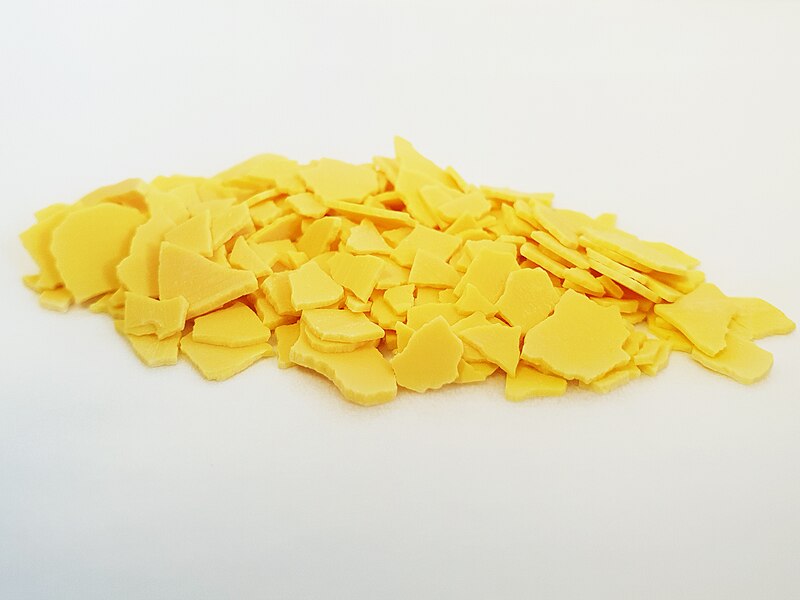
Properties and Composition of Sodium Sulfide
Sodium sulfide (Na2S) is an inorganic compound composed of sodium, sodium ions (Na+), and sulfide ions (S2-). It is a white crystalline solid that is highly soluble in water. When dissolved in water, it forms an alkaline solution with a pH of around 11-13. Sodium sulfide exists in two forms - anhydrous sodium sulfide (Na2S) and sodium sulfide monohydrate (NaSH). The anhydrous form is rarely used due to its hygroscopic nature. Commercial Sodim Suldide is usually produced in the form of sodium sulfide nonahydrate crystals (Na2S∙9H2O). Each formula unit of sodium sulfide nonahydrate contains two sodium ions, one sulfide ion, and nine water molecules. The chemical formula can be written as Na2S∙9H2O. Approximately 98% of commercial sodium sulfide is produced and sold in this hydrated nonahydrate form.
Uses and Applications of Sodium Sulfide
One of the major applications of Sodium Sulfide is in the production of paper. It is used as a deinking agent to remove ink from waste paper during paper recycling processes. The alkaline sodium sulfide solution dissolves the ink molecules, allowing them to be washed away. This makes recycled paper brighter and easier to bleach. Sodium sulfide also finds use in other industries like mining, leather tanning, and wastewater treatment. In mining, it is used for froth flotation - a process used to separate ore from gangue minerals.
Sodium sulfide helps activate the surface of certain minerals so that they can be floated away using air bubbles. In tanning of animal hides, it aids in breaking down collagen fibers and loosening hair and flesh from skins. This improves permeability and softness. In municipal wastewater treatment plants, sodium sulfide allows the precipitation of heavy metals like mercury, cadmium, lead, and copper from wastewater. These metals bond with sulfide ions to form insoluble sulfide salts that are removed via sedimentation. This treatment step helps reduce the amounts of toxic heavy metals discharged into natural water bodies. Other minor uses of sodium sulfide include its use as a reagent in analytical chemistry, manufacturing of rayon, and production of sodium hydrosulfide and hydrogen sulfide gas.
Potential Hazards of Sodium Sulfide
While sodium sulfide has many industrial applications, it is also an extremely hazardous substance if not handled carefully. Its aqueous solutions are highly corrosive to eyes and skin on contact. They can cause severe burns, damage tissues and even blindness if exposure occurs. Inhalation of dusts or mists containing sodium sulfide can irritate the respiratory tract and cause complications like pulmonary edema. Ingestion of sodium sulfide solution or solid generally proves fatal. It reacts violently with acids and water to generate highly toxic hydrogen sulfide gas.
Contact with acids or organic materials should be strictly avoided as this can cause dangerous fires or explosions. Sodium sulfide is also a severe environmental hazard. Spills of its solutions may raise the pH of soil and water, negatively impacting local ecosystems. Some of the other health hazards associated with sodium sulfide exposure include headaches, dizziness, nausea, shortness of breath, fatigue, and damage to the liver, kidneys and central nervous system upon prolonged or high exposure. Due to its corrosive and toxic nature, appropriate protective equipment like chemical resistant gloves, safety goggles and protective clothing must be worn while handling this compound. Proper ventilation should also be ensured in work areas.
Safety Standards and Regulations
Considering the hazardous properties of sodium sulfide, many regulatory agencies across the world have imposed strict standards regarding its production, storage, transport and usage. In the United States, the Occupational Safety and Health Administration (OSHA) has established a permissible exposure limit (PEL) of 1 mg/m3 for sodium sulfide dust exposure over an 8-hour workday. The National Institute for Occupational Safety and Health (NIOSH) recommends a more stringent recommended exposure limit (REL) of 1 mg/m3 for sodium sulfide dust over 10-hour exposure in any 40-hour workweek. Similar or even lower exposure limits have been prescribed by regulatory bodies in the European Union and other developed nations.
Proper labeling of sodium sulfide containers, maintaining safety data sheets (SDS), employee training, and conducting routine air monitoring are some of the key recommendations made globally with respect to sodium sulfide handling. Strict classification has also been accorded to it as a hazardous substance. If transported, sodium sulfide shipments have to follow the regulated procedures under dangerous goods transportation regulations. With adequate precautions and compliance to relevant safety guidelines, sodium sulfide can be utilized safely in industrial operations. However, one should be fully aware of the risks involved due to its high reactivity and toxicity, especially upon accidental exposure situations. Careless or negligent handling may prove disastrous.
Get this Report in Japanese Language:
Get this Report in Korean Language:
Resources –
Recent development in Sodium Sulfide Market
Environmental Impact and Safety Considerations in Sodium Sulfide Handling
About Author:
Vaagisha brings over three years of expertise as a content editor in the market research domain. Originally a creative writer, she discovered her passion for editing, combining her flair for writing with a meticulous eye for detail. Her ability to craft and refine compelling content makes her an invaluable asset in delivering polished and engaging write-ups.
(LinkedIn: https://www.linkedin.com/in/vaagisha-singh-8080b91)


































